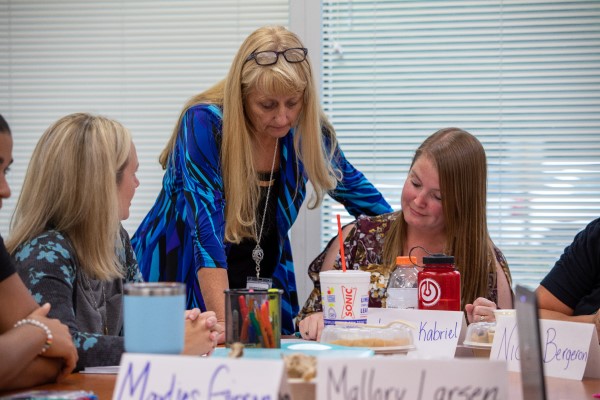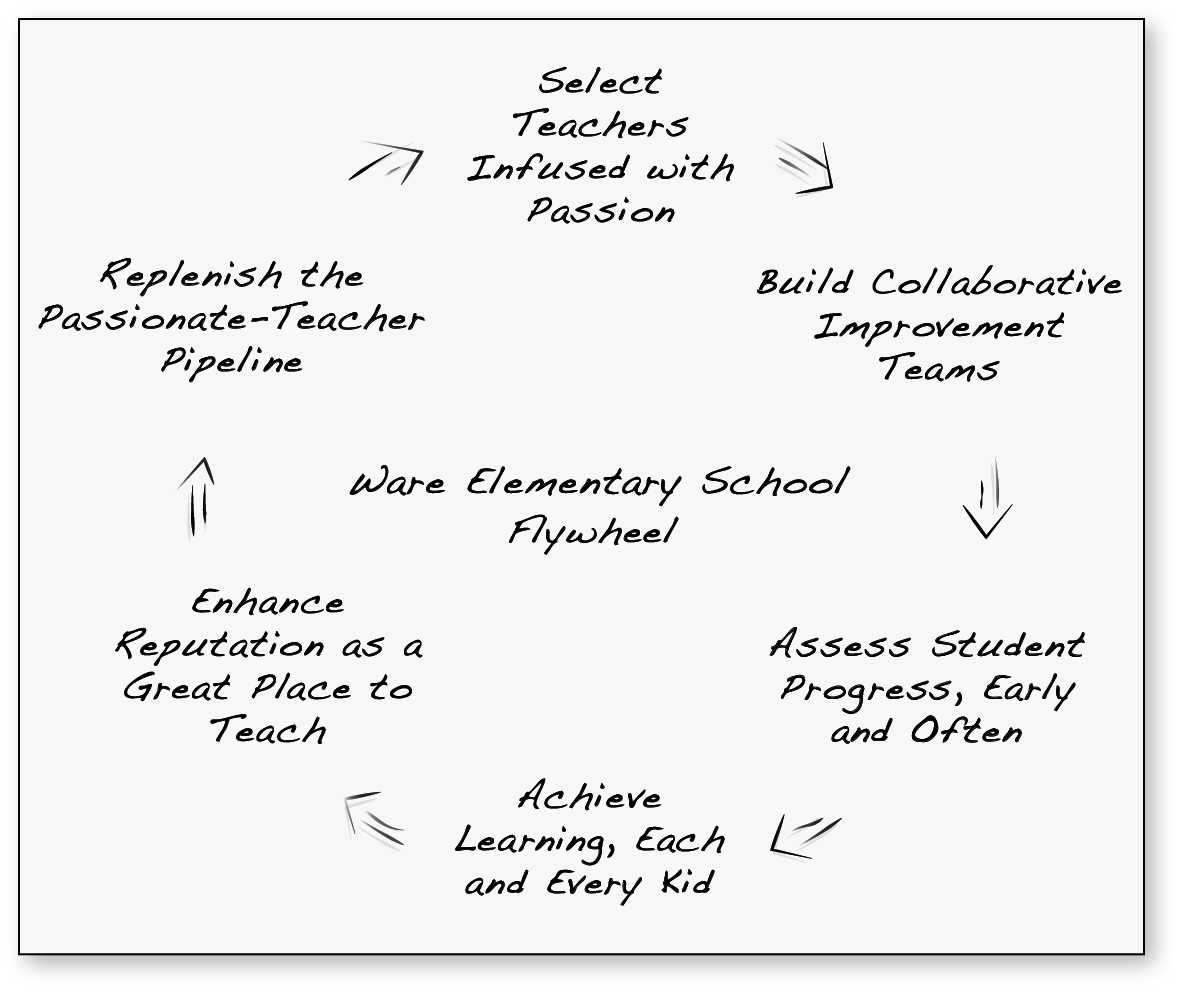Our Simple Flywheel Spins Off Major Gains
December 01, 2019
Using the flywheel model to resuscitate a state-sanctioned elementary school

If I can successfully frame the problem, I am more likely to find the best solution. Good to Great by Jim Collins and his model of a flywheel helped me do that.
The Challenge: I was assigned to serve as principal of a 1,000-student elementary school situated in the middle of a military installation in Kansas. The school had been placed on state-sanctioned school improvement status. Union complaints, low teacher morale, divided leadership, duplicated suspensions, disruptive discipline challenges and high student and teacher mobility were the major symptoms.
Most devastating was the extremely low student performance. With fewer than 40 percent of the students on grade level in reading or math, I recognized the urgency for improvement.
The Opportunity: With 10 years of principal experience, I knew one thing for certain: Every kid deserves a great education every year.
In the absence of a leadership team, I created a five-year improvement plan that included reviewing hiring practices, establishing a non-negotiable environment of respect and developing a system of academic accountability. But these provisions lacked an overall structure for becoming a turnaround school.
Collins’ flywheel provided a conceptual framework for the plan. Consistent energy applied to the flywheel would build momentum and create a breakthrough to sustain the energy we would need. Rather than seeking a miracle moment or big initiative, Collins suggested developing the relentless practices I planned to implement

Our Flywheel: The school was limited in the pool of experienced teachers available for hire. Therefore, our plan was to hire first-year educators with a passion for students and a fire in their belly for education. We could equip them with the necessary pedagogy and instructional strategies, but we couldn’t create heart.
Secondly, we put first-year teachers on a caring, nurturing team to ensure their success as they collaborated daily on agenda-driven purposes. and we provided teachers with unlimited amounts of support to ensure their own personal success. We tested students frequently and intervened quickly where gaps were identified. Administrators monitored the success of every student quarterly and reviewed written improvement plans with teachers.
The success of these teams improved the climate in the building. Teacher, student and parent morale improved, student behavior improved, and teacher turnover dropped.
Our Success: The flywheel concept worked. In the first year alone, we pushed student achievement on state reading assessments above the 70 percent bar and two years later to 96 percent. Students continue to score above state and district averages. No one discusses the flywheel anymore. It is just business as usual. It’s what we do and who we are.
Maintaining the momentum takes minimal effort because everyone is trained in the same structure. School staff now can apply energies to students’ social and emotional needs because the academic process is in place.
Sometimes the simplest of models work the best. The flywheel is not a complex machine, and school improvement should not be so complex it cannot be attained.
About the Author
Debra Gustafson is executive director for student services in Unified School District 475, Geary County Schools, in Junction City, Kan.
Advertisement
Advertisement
Advertisement
Advertisement



